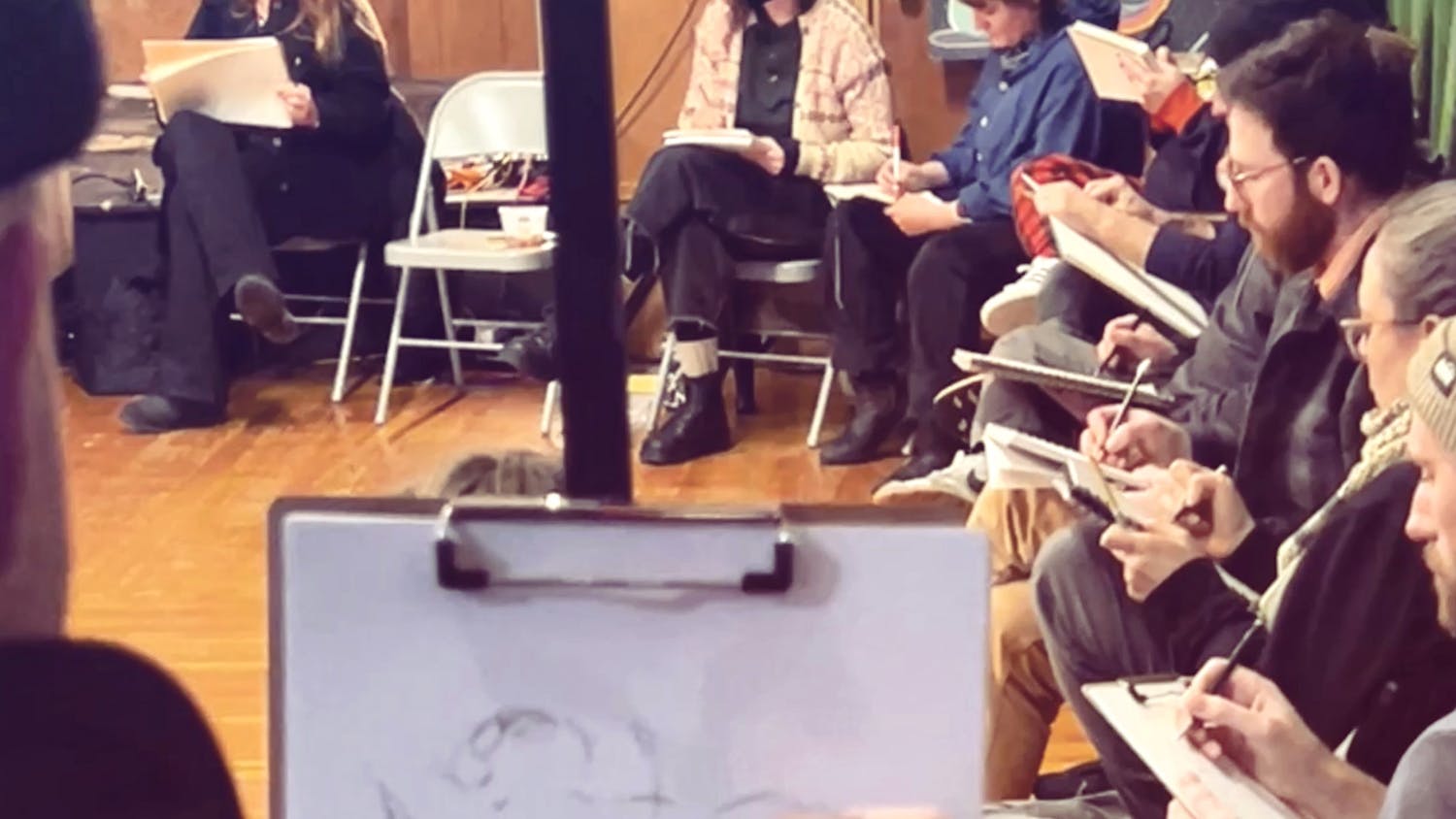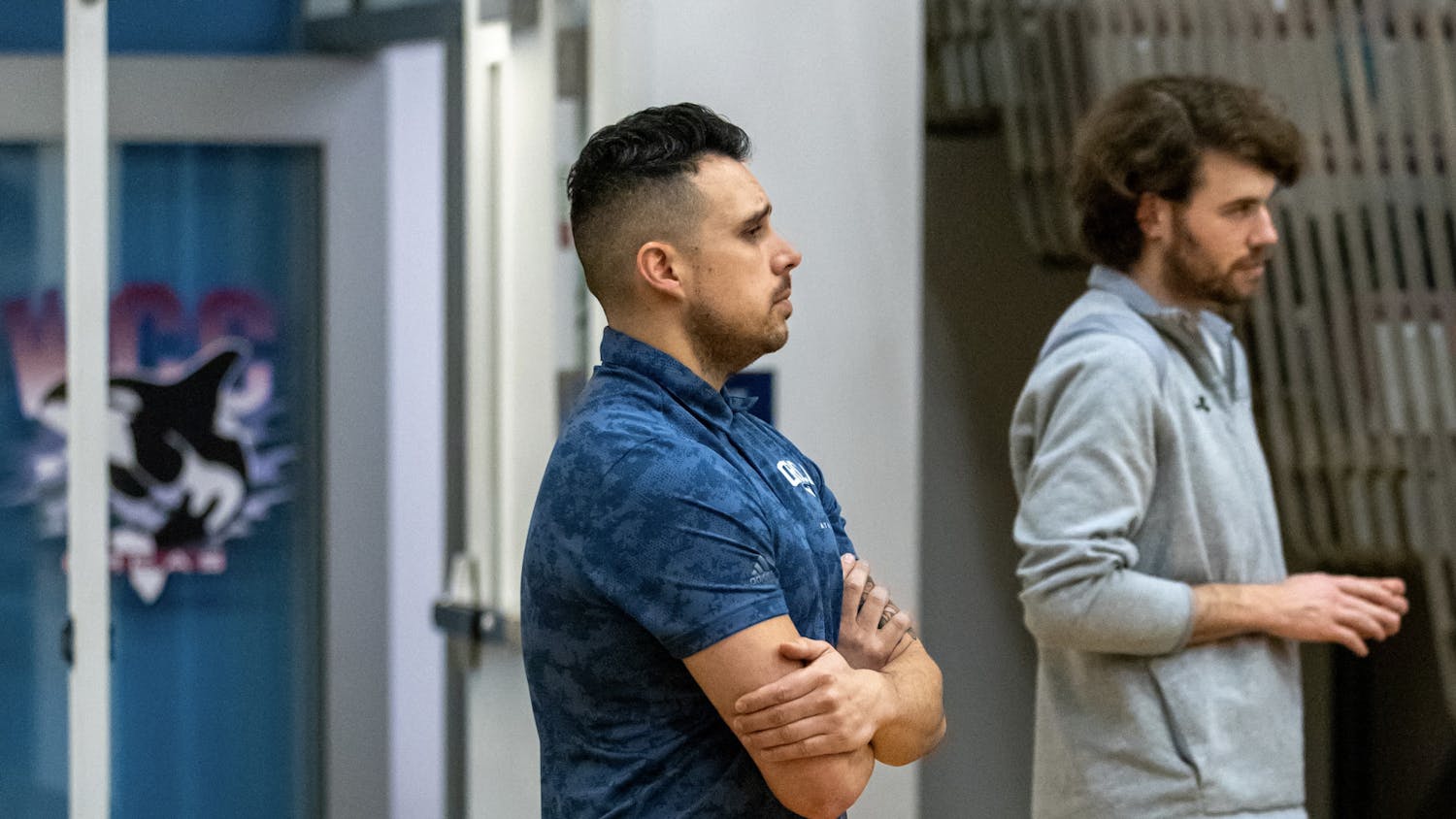 Since the early 1990s, Western has been working to improve disability resources and accessibility partly in response to the Americans with Disabilities Act passed in 1990.
Senior Jacob Kinser is the program coordinator at Western’s disAbility Resources for Students and a student himself returning to finish his bachelor’s degree. Kinser uses a wheelchair, and said there was no way he could access multiple buildings on campus in the mid-1990s when he started at Western. In the years since, Kinser said the improvements have come slowly, but the march continues to move forward.
“I’m back as a student now, and it’s a different world,” Kinser said. “Technology’s a whole lot more involved than it was back in the 90s. I was here in the mid-90s, and I can tell you the access to multiple buildings has improved.”
DisAbility Resources for Students Director David Brunnemer said it’s always important to remember Western is a 100-year-old campus and as a result, some areas will be easier to access than others.
“Every building from the north end to the south end was built in a different era,” Brunnemer said. “Old Main was never designed for [Americans with Disabilities Act] access, whereas Academic West is fantastic.”
Still, Brunnemer referred to a ramp at the north end of the Fine Arts Building’s bottom floor as an example of Western’s commitment to increasing access for all its students and faculty.
“I remember when that ramp didn’t exist, it was stairs,” Brunnemer said. “Now everybody uses that ramp and doesn’t even think twice about it, but it was a big problem years ago.”
Since the early 1990s, Western has been working to improve disability resources and accessibility partly in response to the Americans with Disabilities Act passed in 1990.
Senior Jacob Kinser is the program coordinator at Western’s disAbility Resources for Students and a student himself returning to finish his bachelor’s degree. Kinser uses a wheelchair, and said there was no way he could access multiple buildings on campus in the mid-1990s when he started at Western. In the years since, Kinser said the improvements have come slowly, but the march continues to move forward.
“I’m back as a student now, and it’s a different world,” Kinser said. “Technology’s a whole lot more involved than it was back in the 90s. I was here in the mid-90s, and I can tell you the access to multiple buildings has improved.”
DisAbility Resources for Students Director David Brunnemer said it’s always important to remember Western is a 100-year-old campus and as a result, some areas will be easier to access than others.
“Every building from the north end to the south end was built in a different era,” Brunnemer said. “Old Main was never designed for [Americans with Disabilities Act] access, whereas Academic West is fantastic.”
Still, Brunnemer referred to a ramp at the north end of the Fine Arts Building’s bottom floor as an example of Western’s commitment to increasing access for all its students and faculty.
“I remember when that ramp didn’t exist, it was stairs,” Brunnemer said. “Now everybody uses that ramp and doesn’t even think twice about it, but it was a big problem years ago.”
“We’ll be making it known that this campus has some problems with accessibility.”
Junior Madeline Henry
Despite some of the progress he sees, Brunnemer said the university’s bathrooms need to address fundamental upgrades necessary to keep up with present day expectations.“Bathrooms are a constant upgrade cycle,” Brunnemer said. “Bathroom coding has changed over the last 20 years. So 20 years ago, they would have designed a bathroom that everyone celebrated as being [Americans with Disabilities Act] accessible. Now it’s not, so [bathrooms] have to go back and be retrofitted.”
Junior Madeline Henry has autism. She described encountering a different type of challenge.
“I actually had to drop my first major because it was kind of hostile and switch to a different one,” Henry said.
Henry said she has difficulty listening to and understanding lectures, so she records them to play later.
“I’ve had this accommodation for four years now and I’ve had it at my old college,” Henry said. “But when I got here, the professors were so worried that I was going to sell my recordings or something. For the first two weeks of class, they wouldn’t let me record, which is against the law, because they got notified three weeks before classes even started.”
In spite of this, Henry is working toward an improved future. She said that because Edens Hall is relatively accessible, she is working with to prioritize the residence hall for disabled students.
Henry said the disAbility Resources for Students has been a great help to her.
Henry will be part of the future Disability Advocacy Committee, which will aim to raise awareness and address problems.
“We’ll be making it known that this campus has some problems with accessibility,” Henry said. “It’s a great campus, but it’s not perfect, and we’ll be also having days where we can coach professors on how to work with disabled students.”
Kinser said navigating the campus can be especially challenging for students who have recent disabilities or are new to Western.
Senior Emily Owens is another student worker at the disAbility Resources for Students and also uses a wheelchair. She emphasized Western’s challenging natural geography and tricky terrain.
“It’s not always easy to push on bricks and sometimes the certain bricks are missing or certain bricks are loose,” Owens said.
For Kinser, a problematic spot on campus has been Sam Carver Gymnasium. “They’re actually jumping on that [Carver Gym] and making that more accessible,” Kinser said. “I go to the gym, ideally, a couple times a week when I’m not in school, and it would be really nice to be able to just hop over to Carver.”
One challenging factor for creating accessibility is that Western is built on a hillside, meaning that traveling from one campus to the other can be difficult for an individual that doesn’t have a good lay of the land, Brunnemer said.
To improve mobility for disabled students on Western’s terrain, Kinser said he is working with Fred Collins, program adviser of the Outdoor Center, to obtain hand cycles that student with disabilities could use to get around campus.
 Since the early 1990s, Western has been working to improve disability resources and accessibility partly in response to the Americans with Disabilities Act passed in 1990.
Senior Jacob Kinser is the program coordinator at Western’s disAbility Resources for Students and a student himself returning to finish his bachelor’s degree. Kinser uses a wheelchair, and said there was no way he could access multiple buildings on campus in the mid-1990s when he started at Western. In the years since, Kinser said the improvements have come slowly, but the march continues to move forward.
“I’m back as a student now, and it’s a different world,” Kinser said. “Technology’s a whole lot more involved than it was back in the 90s. I was here in the mid-90s, and I can tell you the access to multiple buildings has improved.”
DisAbility Resources for Students Director David Brunnemer said it’s always important to remember Western is a 100-year-old campus and as a result, some areas will be easier to access than others.
“Every building from the north end to the south end was built in a different era,” Brunnemer said. “Old Main was never designed for [Americans with Disabilities Act] access, whereas Academic West is fantastic.”
Still, Brunnemer referred to a ramp at the north end of the Fine Arts Building’s bottom floor as an example of Western’s commitment to increasing access for all its students and faculty.
“I remember when that ramp didn’t exist, it was stairs,” Brunnemer said. “Now everybody uses that ramp and doesn’t even think twice about it, but it was a big problem years ago.”
Since the early 1990s, Western has been working to improve disability resources and accessibility partly in response to the Americans with Disabilities Act passed in 1990.
Senior Jacob Kinser is the program coordinator at Western’s disAbility Resources for Students and a student himself returning to finish his bachelor’s degree. Kinser uses a wheelchair, and said there was no way he could access multiple buildings on campus in the mid-1990s when he started at Western. In the years since, Kinser said the improvements have come slowly, but the march continues to move forward.
“I’m back as a student now, and it’s a different world,” Kinser said. “Technology’s a whole lot more involved than it was back in the 90s. I was here in the mid-90s, and I can tell you the access to multiple buildings has improved.”
DisAbility Resources for Students Director David Brunnemer said it’s always important to remember Western is a 100-year-old campus and as a result, some areas will be easier to access than others.
“Every building from the north end to the south end was built in a different era,” Brunnemer said. “Old Main was never designed for [Americans with Disabilities Act] access, whereas Academic West is fantastic.”
Still, Brunnemer referred to a ramp at the north end of the Fine Arts Building’s bottom floor as an example of Western’s commitment to increasing access for all its students and faculty.
“I remember when that ramp didn’t exist, it was stairs,” Brunnemer said. “Now everybody uses that ramp and doesn’t even think twice about it, but it was a big problem years ago.”





